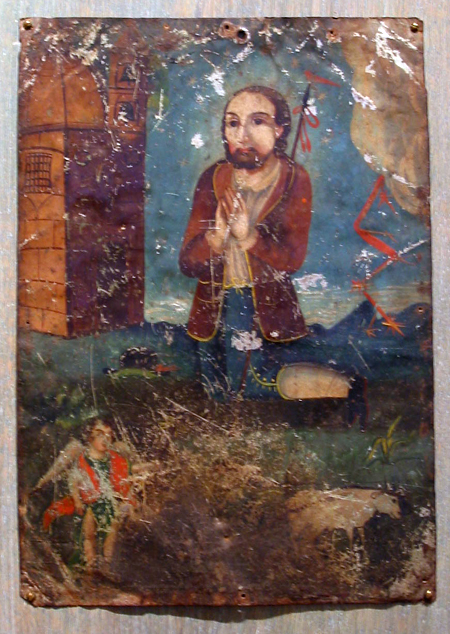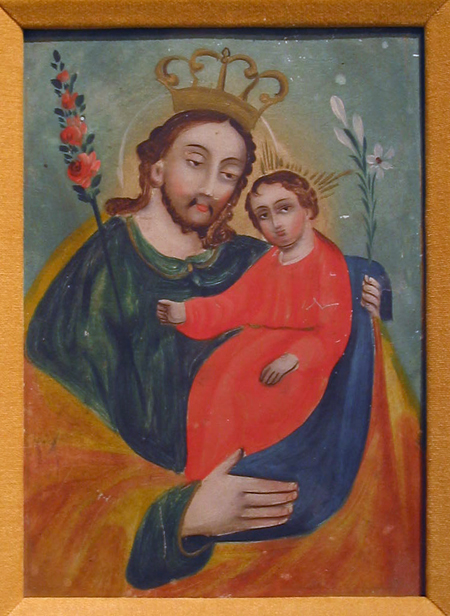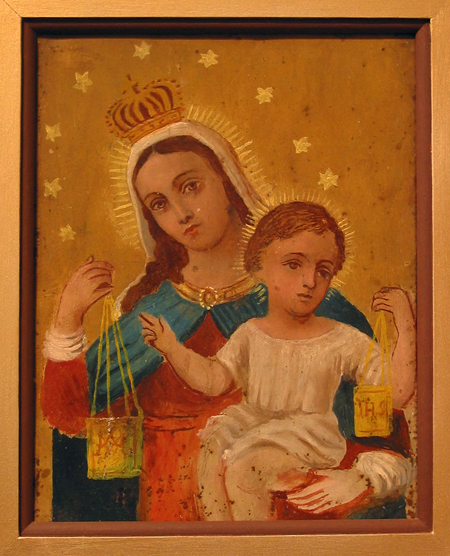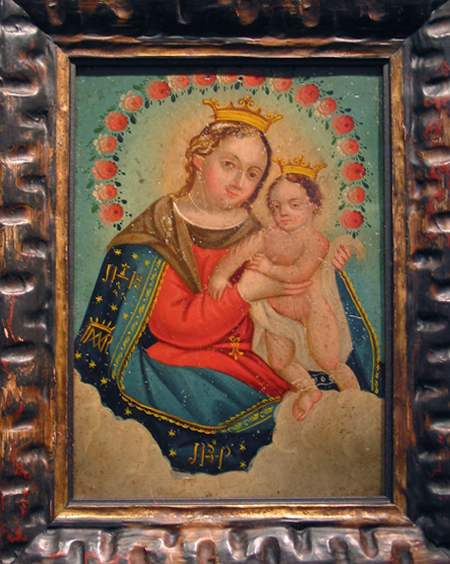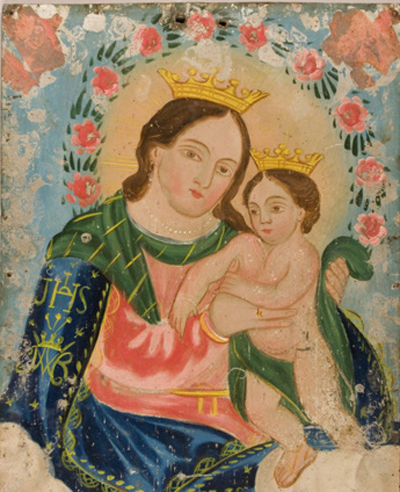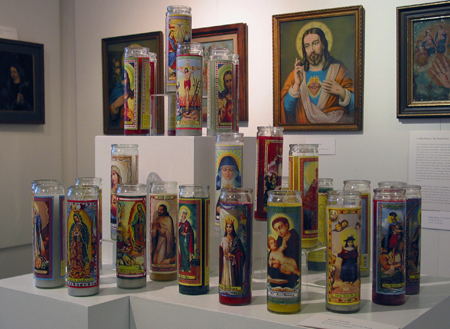
This painting of the Sacred Heart of Jesus is on display at the Museum of the Big Bend through August 29.
The easy availability of tin in the early 1800s led to the development of retablos, oil paintings on tin depicting Roman Catholic saints or holy people. The metal was cheap and durable—especially compared with wood, canvas and linen, materials vulnerable to moisture.
The bulk of the art on display in Faith and Devotion: At Home With the Saints comes from the Betty Byerly Retablo Collection, a recent gift to the Museum of the Big Bend. But the show’s themes extend past the Byerly collection to demonstrate how objects of devotion have changed, but the basic tenets of devotion have not.
Beginning with retablos, which emerged in Mexico in the early 1800s, this exhibition presents examples of functional objects used in private religious devotion over the decades. As manufacturing technologies developed, the materials changed; the look of objects featuring holy images also evolved, and prices dropped.
Over the years, saints have retained the same visual attributes (iconography, as art historians like to say). Each time he appears in this exhibition, St. Joseph wears green and yellow, colors symbolizing faithfulness and regeneration, and holds a flowering staff. The retablos and lithographs in this show are organized by saint, so it’s easy to see the same recognizable figure depicted by a different hand.
The Virgin Mary appears again and again in her different manifestations—the Immaculate Conception, Our Lady of Mount Carmel, Our Lady of Guadalupe. In the retablos, she appears most commonly as Our Lady, Refuge of Sinners. Clad in a blue cape and decked out in jewelry fit for royalty, Mary holds a crowned infant Christ as an arch of red and white roses stretches above the pair. Derived from an original painting located in a town just outside Rome, the image was brought to Mexico by a Jesuit priest in 1719. Curator Mary Bones, who wrote the text accompanying the artwork, posits that the popularity of Our Lady, Refuge of Sinners stems from the faithful’s belief in her ability to lighten the burden of their sins.
Retablos declined in popularity at the end of the nineteenth century as taste for less expensive lithographs grew. Nowadays the faithful no longer seek out the local retablero for a handpainted image of the Virgin—they can go to the local supermarket to purchase a veladora, or prayer candle, for $1.25 or pick up a plastic statue of St. Francis at the nearest hardware store.
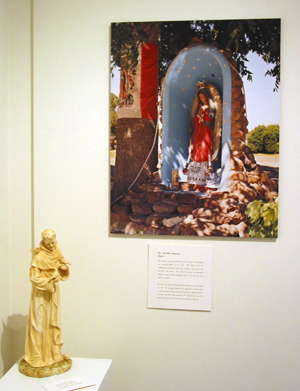
A yard statue of St. Francis on display next to a photograph of an Our Lady of Guadalupe grotto in Marfa
But as this exhibition’s subtitle, At Home With the Saints, demonstrates, common threads bind these objects, regardless of time period, marketing or cost. The functional objects here—paintings, sculptures, lithographs, candles—remain in use as worship aids in private settings (most often the home). And in the gallery setting, believers and nonbelievers alike can appreciate the objects for their beauty and cultural impact.


